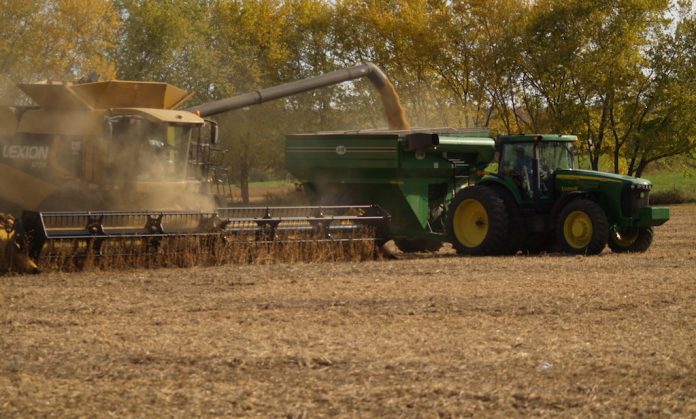Finally! Something to talk about rather than just the harvest progress and the crop size.
Monday President Donald Trump trumpeted (I could have resisted, but I didn’t) his USMCA (U.S., Mexico, Canada) trade deal. This agreement, still to be formalized on paper, then signed, then passed by Congress, replaces the NAFTA agreement that Republicans and Democrats alike have decried.
NAFTA has been viewed in retrospect as a jobs exporter, and has been especially vilified by labor unions and their interests.
Just last week, Trump answered a reporter’s question at a speech in New York to admit that he had blown off a meeting in New York with Justin Trudeau, the Canadian prime minister, while everyone was gathered at a U.N. function.
The president said that Trudeau was not budging on trade issues, so there was no reason to meet. He indicated that if a Canadian agreement was not reached by Friday, NAFTA would still end and we would just have a bilateral agreement with Mexico.
Succinctly put, Trudeau blinked.
This Monday, Trump praised Trudeau for being a good advocate for his people. Trudeau did not thank Trump, which pretty much shows how he felt he came out in the deal.
I am not conversant with the exact details of the USMCA agreement. The only criticism so far is that it does not pronounce as well as “Naf-Ta!”
I am told it is good for labor, good for wheat, good for dairy products, and good for U.S. manufacturers of auto parts. That industry is centered in the upper Midwest, and provides day jobs for many American farmers in addition to the general population. Ohio, especially, has the auto parts business as a cornerstone for local business.
Grain harvest update
Meanwhile, back on the farm, harvest has been spotty in some areas with local rains. Near me, some corn is off, and a few soybeans. Some farmers have told me the corn is ready before the beans because the beans look dry, but have green areas in the fields.
The result is that the early harvest is not as early this week as last. USDA reported Monday that the Ohio corn harvest is at 11 percent, up from 6 percent last week. Last year at this time we were at 7 percent, and the average is 10 percent, so we are now barely above the average.
The U.S. numbers are, of course, higher. We are 26 percent harvested, up from 16 last week, and still well above the 17 percent average. Last year we were at 16 percent.
The soybeans show Ohio at 15 percent against an average at this time of 20. Last week we were just at 6 percent, but we had 21 percent off at this time last year. The U.S. has harvested 23 percent, up from 14 last week. Last year we had 20 percent off, and that 20 is the five-year average.
The early harvest results are part of the reason one major private consultant has raised their corn yield estimate to 182.7 bpa from the already astronomical 177.7. This would give a crop of 14.94 billion bushels, up from their previous estimate of 14.532 billion. Yikes!
The same people think the soybeans will produce 4.796 billion bushels, up from 4.782. This comes on a 54-bpa average, just a tweak above the last 53.8 estimate.
Add to this the raised estimates from a couple of sources of the Brazilian crop for 2018-19. Also, the Brazilians are expected to raise acres next year by 3.8 percent. The bad news just keeps coming.
Even with negative crop news, the trade agreement helped prices continue the recent rally off the bottom Monday. On that day, December corn futures were up nine and a half cents, to a high of 3.64, almost 22 cents above the recent low. November soybean futures closed up over 12 cents, with a high almost 54 cents above the Sept. 18 low.
Friday prices had been sharply lower, so we mostly just used the trade news to reverse the Friday losses.
What is ahead? I wish I knew.
It is hard to see any big rallies with the crops still getting bigger in new estimates. We will have a Crop Production report from USDA on Thursday, Oct. 11, to compare with recent private reports.













